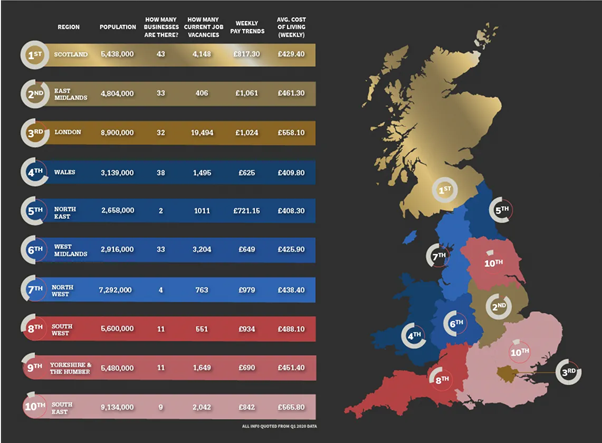Equal Pay Day 2020: What the Pay Gap Looks Like for Women in STEM

The @FawcettSociety recently announced that #EqualPay Day 2020 (the day in the year when women effectively, on average, stop earning relative to men in the UK) will fall today, on the 20th November.
While Equal Pay Day has promisingly shifted further towards the end of the year, there is still a long way to go – especially considering the suspension of pay gap reporting this year, and with the second lockdown likely to hit women the hardest again.
The mean gender pay gap for all employees, not just those working full-time, is 14.6% this year, down from 16.3% last year
The gender pay gap in the UK has been steadily closing, with the ONS stating that the average gender pay gap among all workers has decreased from 17.4% to 15.5% in the last year.
For those in full-time employment, the gender pay gap has dropped to 7.4% for the first time in over two decades.
Fifty years on from the Equal Pay Act 1970, the gender pay gap is at a record low, with Equal Pay Day having moved six days later in the year, compared to 14th November in 2019. This is sixteen days after women living in the European Union effectively begin working for free, according to the EU commission.
Aside from women generally being underrepresented in senior roles across all trades and industries, other reasons for the wage disparity include women working in lower-paid jobs and being more likely to work part-time as they shoulder the majority of childcare responsibilities.
 Kirstie Donnelly MBE, Chief Executive Officer at City & Guilds Group, comments on Equal Pay Day 2020:
Kirstie Donnelly MBE, Chief Executive Officer at City & Guilds Group, comments on Equal Pay Day 2020:
“Why in 2020 are we still facing the problems of women being undervalued, underpaid and a seemingly insurmountable gender pay gap that will take decades to close?
“We know downturns and economic turbulence disproportionately affect women, who are less likely to be working full time, less likely to hold a management position and less likely to have access to training and progression opportunities. We also know that from an early age, young women are still being pigeonholed into specific industries such as care, retail and nursing which are often low paid and have less chance for career progression.
“If we want to build an economic recovery that values the contributions of all people then there are clear steps we need to take. First we need to start early and provide role models for young women as well as help them to believe they can have any career they want.
“We should then use the unique opportunity the pandemic has given us to create a more flexible working environment that doesn’t penalise women who often shoulder the burden of caring responsibilities outside of work. And finally, we must start to really value and pay those jobs that we have utterly depended on during this year such as education, social services, and nursing. There is so much more for us to all do before we can celebrate that we are becoming a fairer and more equal society in respect to gender, despite some of the progress that’s being made.”
Agata Nowakowska, Area Vice President at Skillsoft:
“Equal Pay Day has shifted slightly later this year (six days, in fact), signalling progress is being made for pay equality for women. However, while the figures paint a positive picture for gender parity, they should also be viewed with skepticism.
“The unfortunate reality is, that against the tumultuous backdrop of a pandemic-struck Britain, the fight for pay equality has fallen to the wayside for many. In March, the Government Equalities Office effectively suspended the reporting requirement for the year. Indeed, a quarter less employers responded to the Annual Survey of Hours and Earnings (ASHE) than normal. Whilst employers have understandably shifted their focus to business survival, it is important they don’t lose sight of their gender pay goals. Pay gap reporting, in usual circumstances, enables companies to actively recognise and work towards improving the gender pay gap, acting as a benchmark for the entire organisation.
“With women over-represented in sectors (such as the service industry) hit hardest by the pandemic – and bearing the brunt of childcare and caring responsibilities as lockdowns continue – it is more important than ever that employers stand up and address the pay gap head on.
“Resolving the disparity in pay is complex and involves more than merely a number. Employers must ensure every employee has the opportunity to expand their role towards higher-paying positions. This could mean reviewing how your organisation views maternity and paternity leave, addressing unconscious bias, or facilitating professional development. Above all, it’s about making a continued, concerted effort; meaningful change cannot occur overnight.”
Nicole Sahin, CEO and Founder, Globalization Partners:
“Equal Pay Day enables us to benchmark year-on-year progress towards gender pay parity. Whilst it is encouraging to see the pay gap drop from 13.1% in 2019 to 11.5% in 2020, the Covid-19 pandemic has had a disproportionate impact on women – who have borne the brunt of extra childcare, and lost jobs in greater numbers than men. Indeed, according to international institutions, including the UN and the World Economic Forum – the pandemic could set women’s economic progress back half a century.
“With this in mind, it is even more important that employers prioritise equality across every aspect of the organisation, to ensure women’s progress is accelerated. This begins with hiring diverse teams, nurturing female talent, and making sure boardrooms have an equal mix of men and women. I’m proud to say that currently, about half of my senior management team are women – and it is encouraging to see other great women progressing at an accelerated pace.
“Gender equality is also good for business. Time and time again, research shows that organisations that have a high percentage of diversity financially outperform their competitors. I’ve seen first-hand the powerful results that occur when people with different perspectives work together. Organisations must keep striving to narrow the pay gap, not just because it’s the right thing to do, but because it is an important aspect of economic growth. And with continued effort, hopefully Equal Pay Day can soon be on the 31st December for all women.”
Jonquil Hackenberg, Head of Sustainable Business at Infosys, said:
“While we can assume that corporates don’t set out to purposefully pay women less, what’s often ignored when “solving” the Gender Pay Gap is the reality of the problem. For all the talk of board diversity and hiring young women in STEM, it’s not board members or graduate intakes causing the gap to widen – it’s the very nature of work itself, the foundations of which perpetuate the Gender Pay Gap and all inequalities.
“The pivotal step to achieving equal pay in all its forms is creating a culture of outcome-based work. Shifting from ‘hours slaved’ to prioritising outcomes means employees are measured, paid and promoted based on the outcomes of the work they do – not on whether they hit a financial target or worked weekends. Women, for example, can then be rewarded for the 10% of extra work they take on in ‘non-promotable tasks’. Whether it’s diversity strategies, mental health initiatives, or culture or morale-boosting exercises, we need metrics that reward these tasks on a level playing field with old school financial targets. Hopefully we’ll soon see more companies adopt these ideas, since the World Economic Forum’s new ESG metrics measure dignity, equality, and health and safety on par with financial prosperity.
“Outcome-based work models also advance the Equal Pay agenda for working mothers – and the disabled, or those with caring responsibilities – by making anytime, anywhere working even more successful. We’ve known for decades that flexible working is one of the crucial ways we can stop women leaving the workforce. Being able to work around nursery schedules and bedtimes, or knowing that your career won’t be stalled by not being able to go into an office every day of the week, are both crucial to achieving equal pay, and to stopping the Gender Pay Gap in its tracks.“Creating an outcome-based work culture requires significant investment in digital technologies – which many businesses have already made this year to ensure remote working is as successful as office-based work. As such, there’s no excuse not to put these digital investments to good use – today – to make equal pay a reality in every organisation.”
Women in STEM
Women continue to break down stereotypes within male-dominated industries – such as construction, agriculture, manufacturing and engineering – taking on roles they wouldn’t have been able to in the past. As a result, the number of women working in skilled trades has begun to increase steadily.
Women are still under-represented in STEM (Science, Technology, Engineering and Mathematics) sectors, while the STEM gender pay gap continues to be quite large in comparison to other industries.
Whilst there are many male allies, as well as women, striving for greater gender equality, in the technology sector women make up just 5% of leadership positions. Furthermore, research from Mercer found that men in high-tech companies earn 25% more than women.
Despite this, research from Dickies Workwear reveals Scotland is the number 1 region in the UK for women pursuing careers in engineering, followed by the East Midlands and London.
Best Regions for Women in Engineering:
- Scotland
- East Midlands
- London
- Wales
- North East
- West Midlands
- North West
- South West
- Yorkshire & The Humber
- South East
There are few engineering businesses in the North (6 in total), and women generally have the potential to earn more working in the North West, rather than the North East, in these businesses.
Due to lower house prices and cost of living, however, the North East remains the better choice between the two.
The South East is the worst choice for women pursuing a career in engineering, with a small number of engineering businesses (9) and a high average general weekly cost of living (£565.80).











Responses